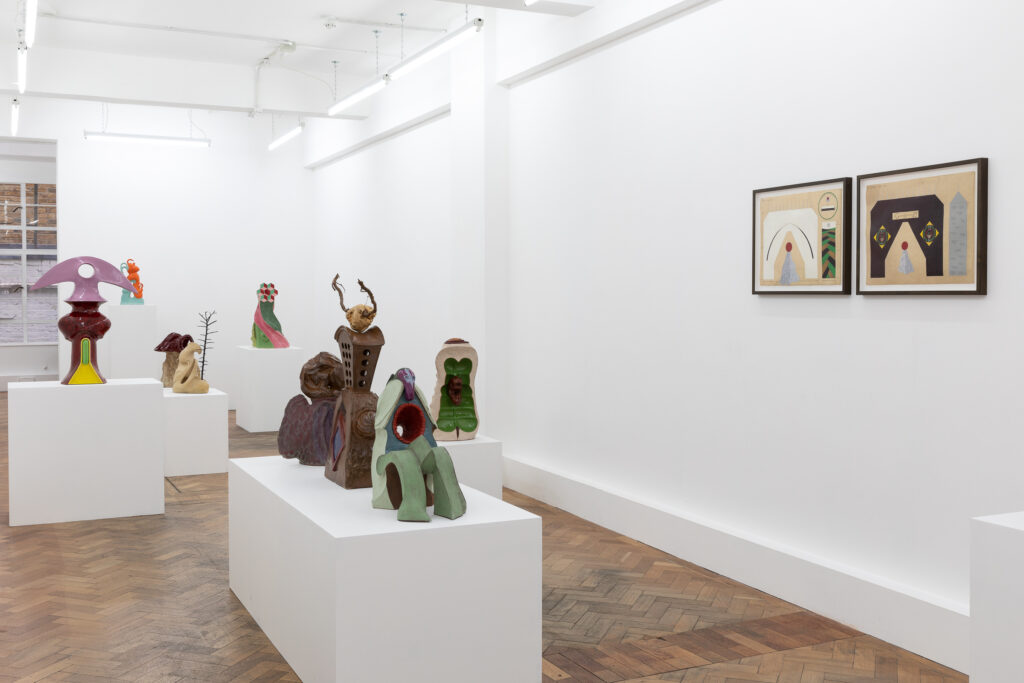
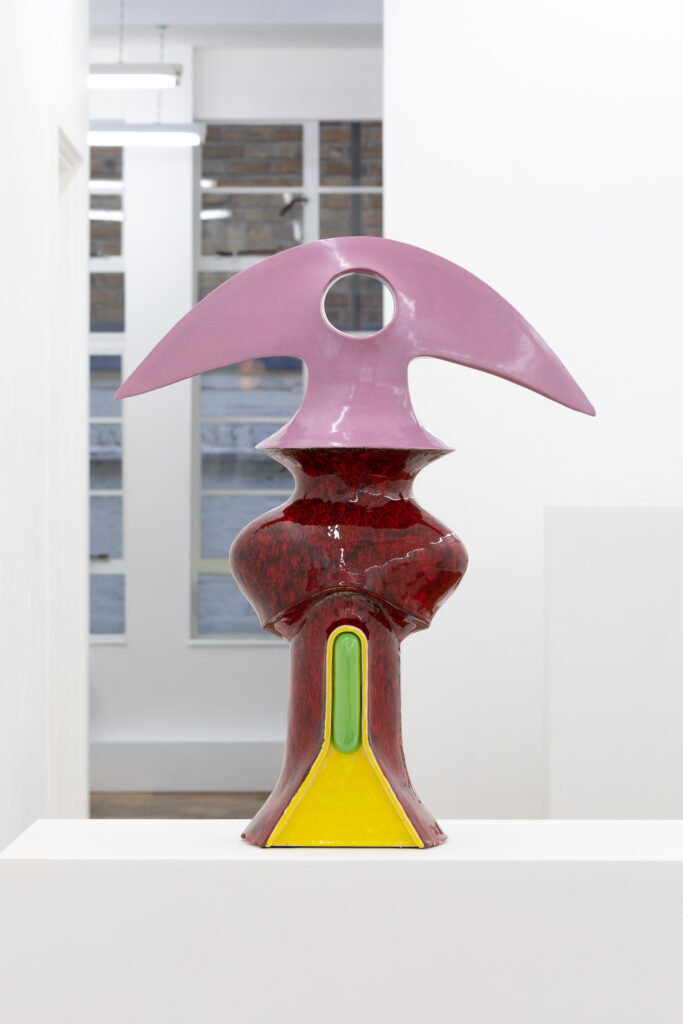

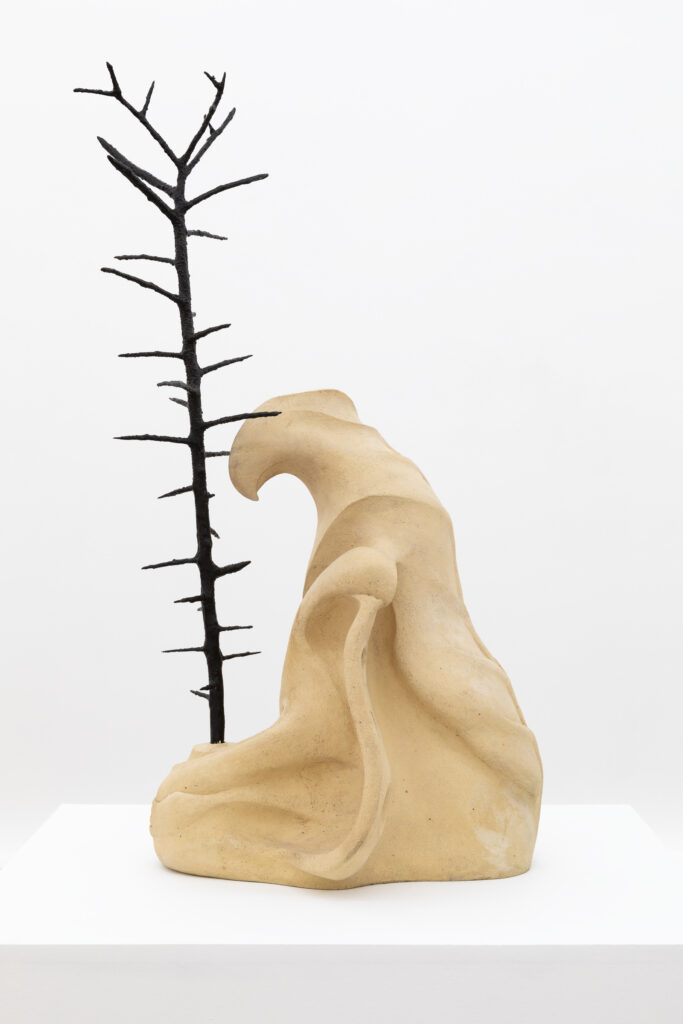

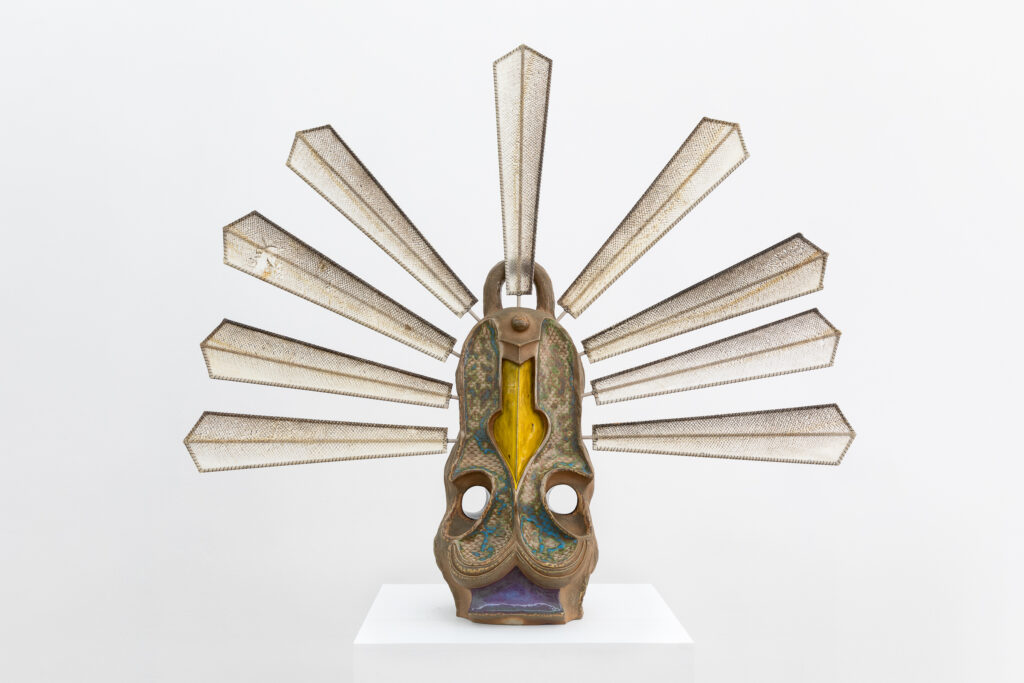

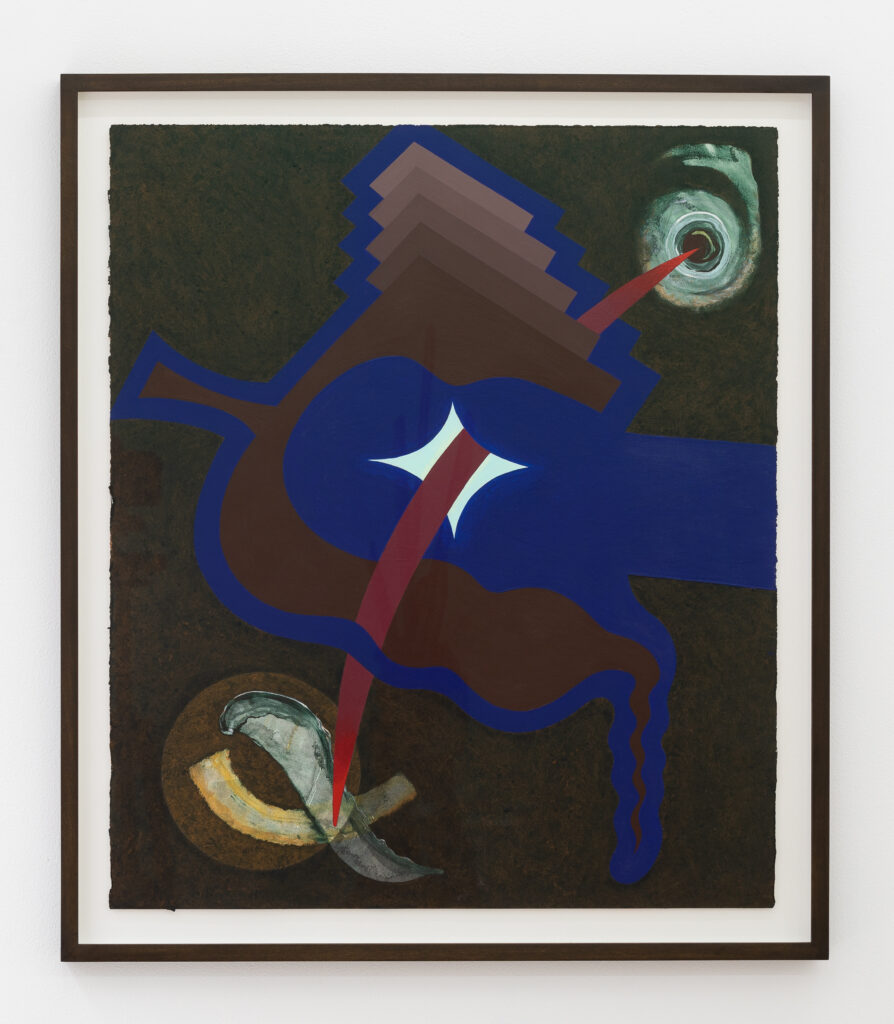
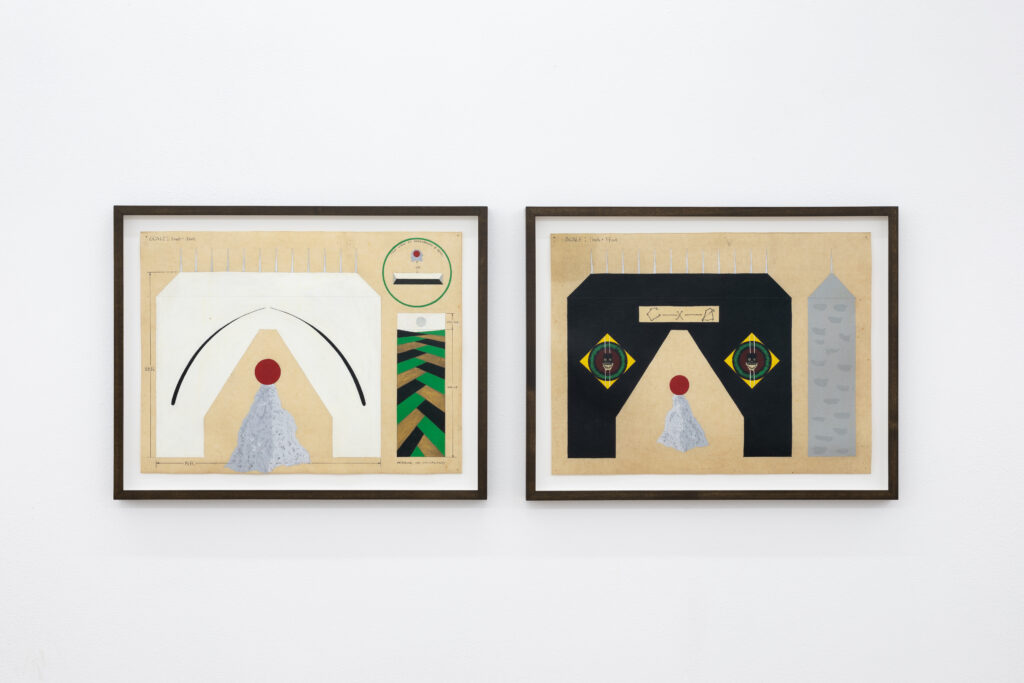
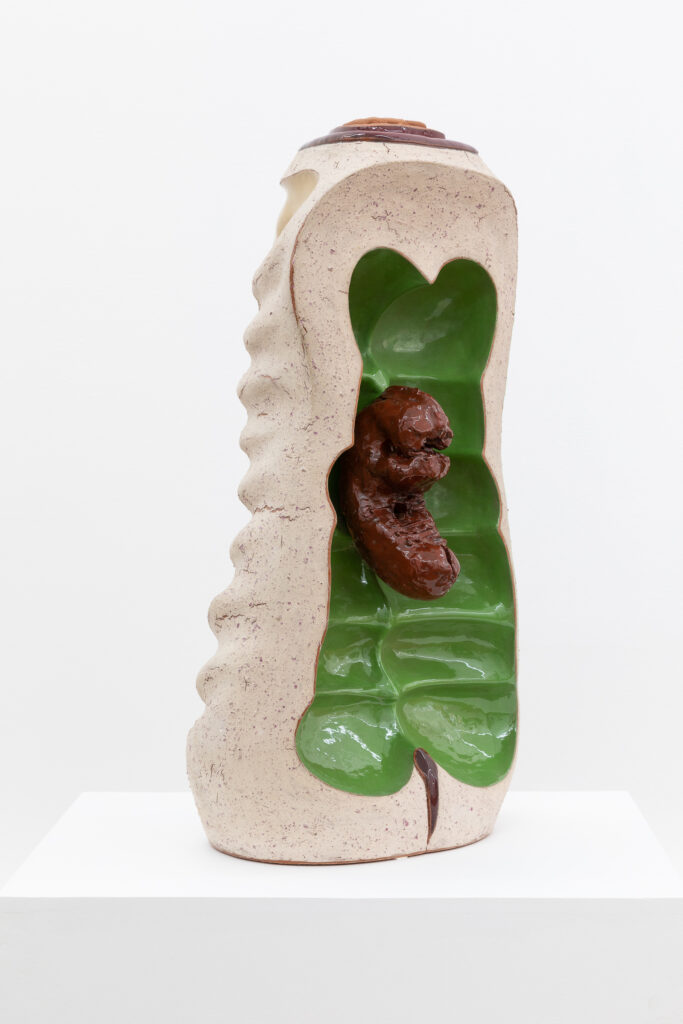
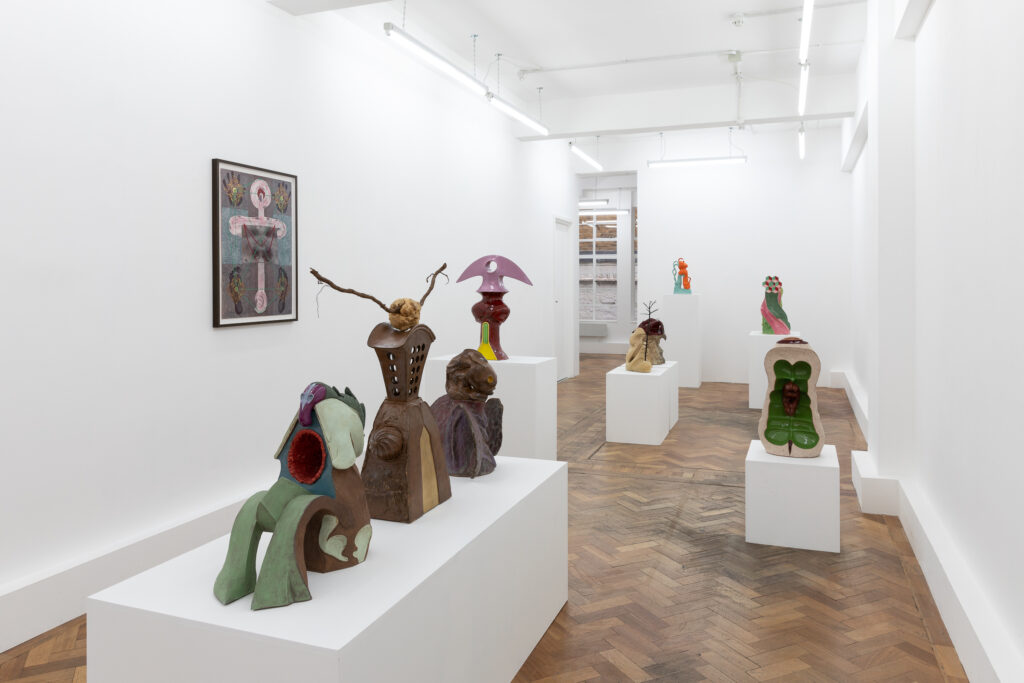
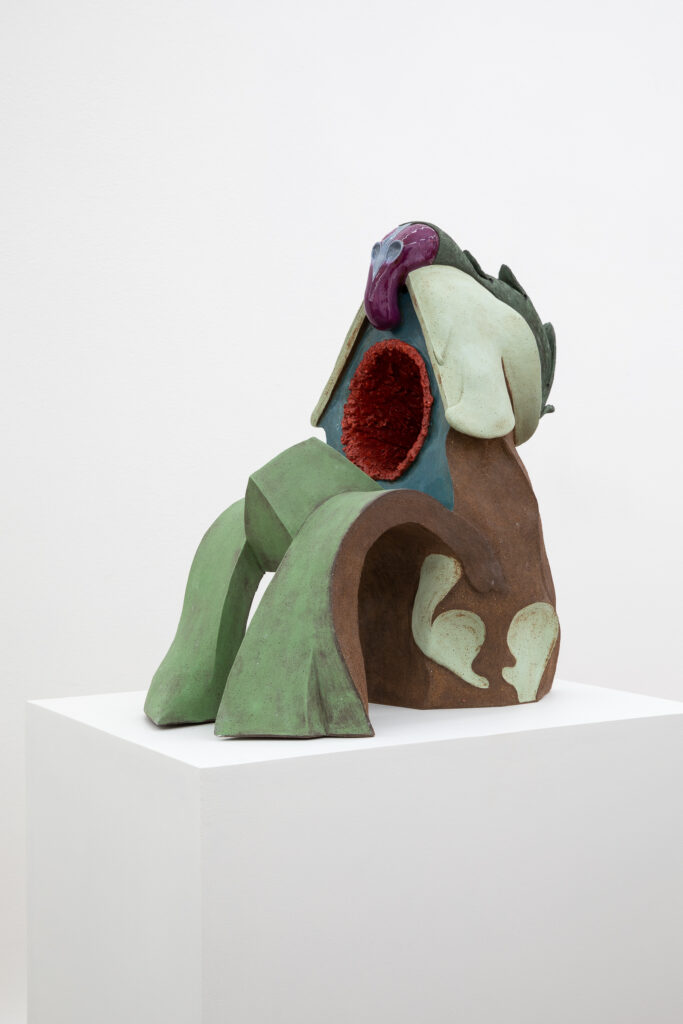
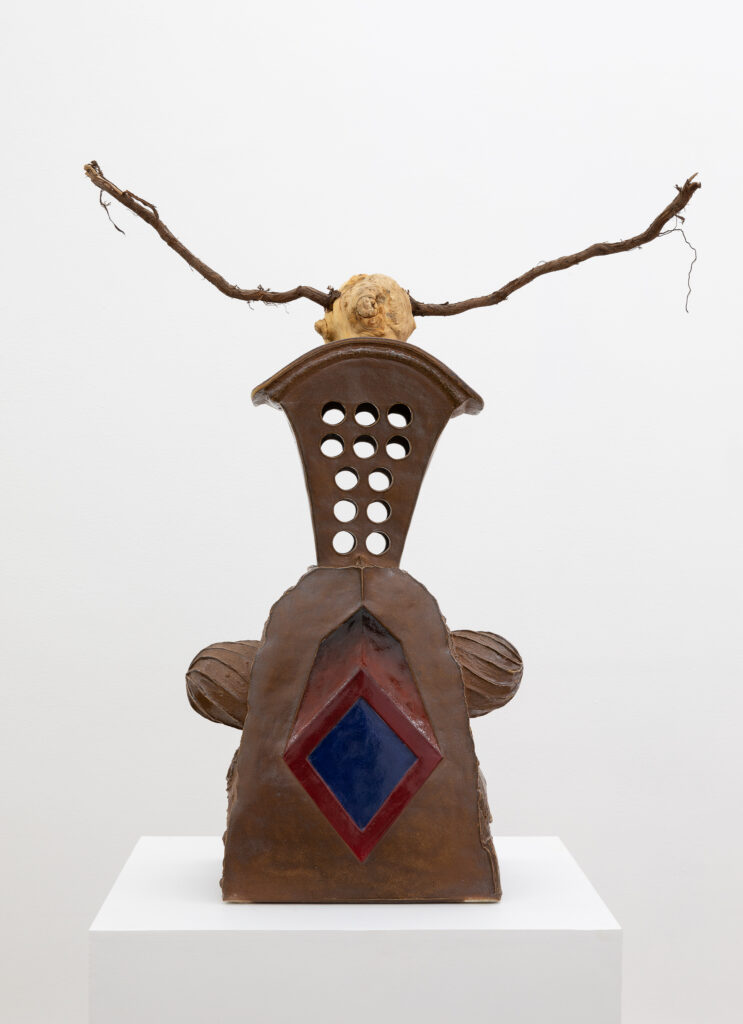


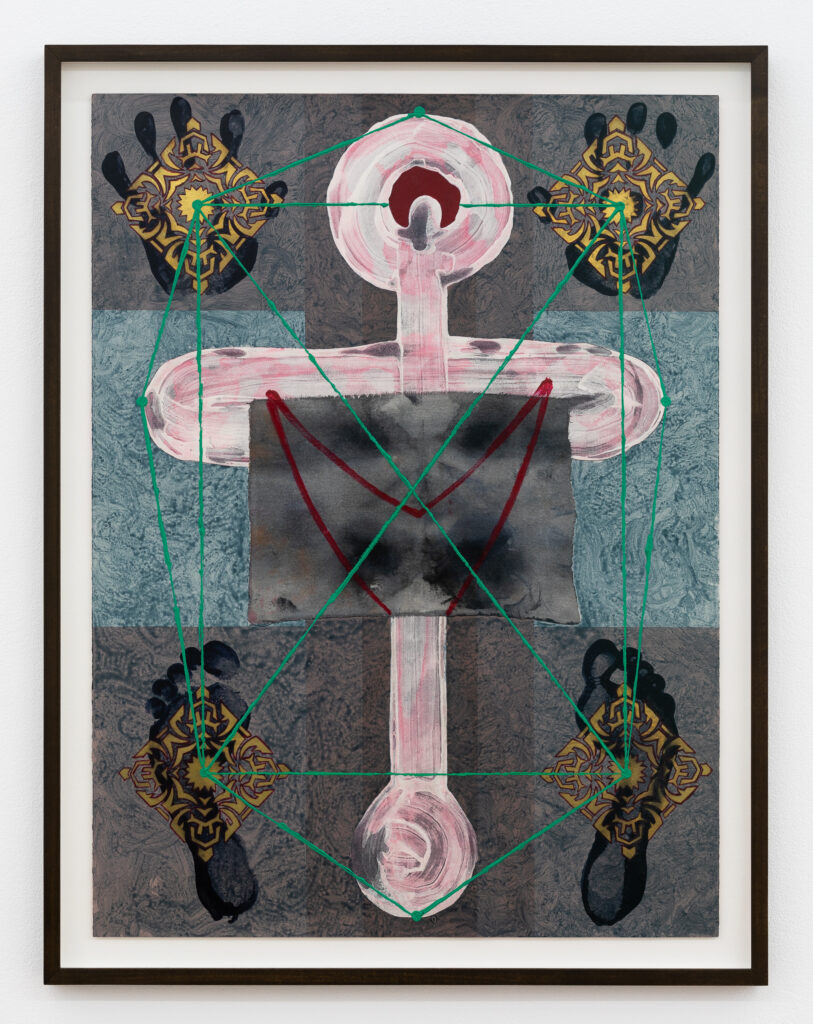


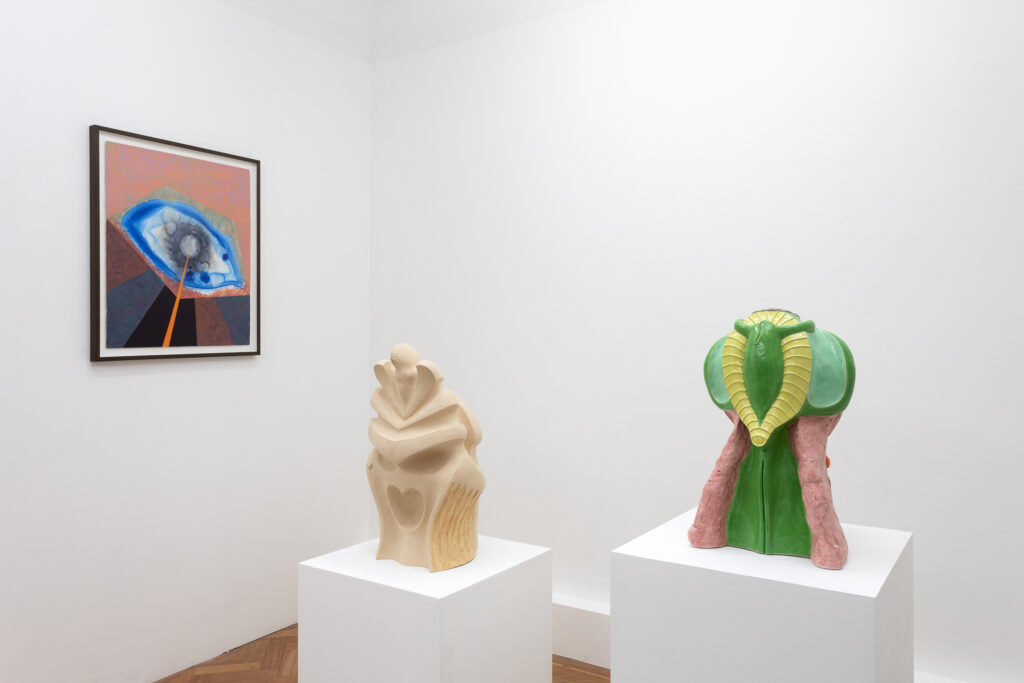
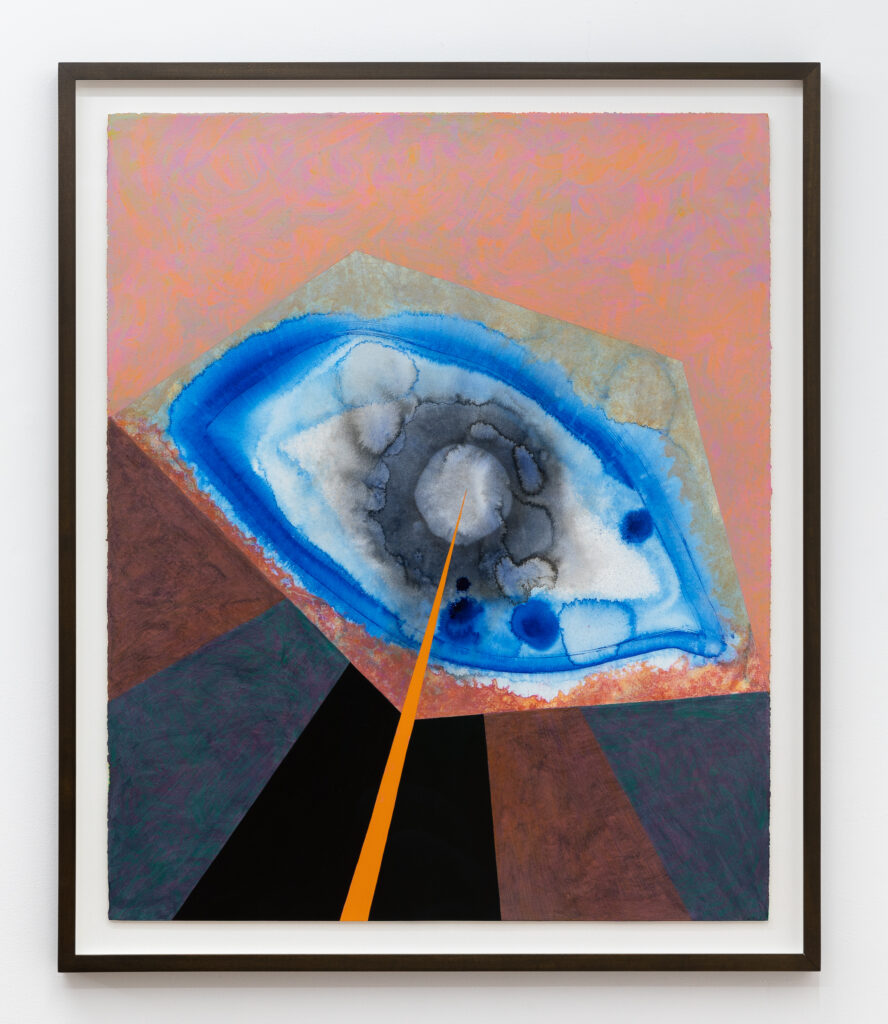
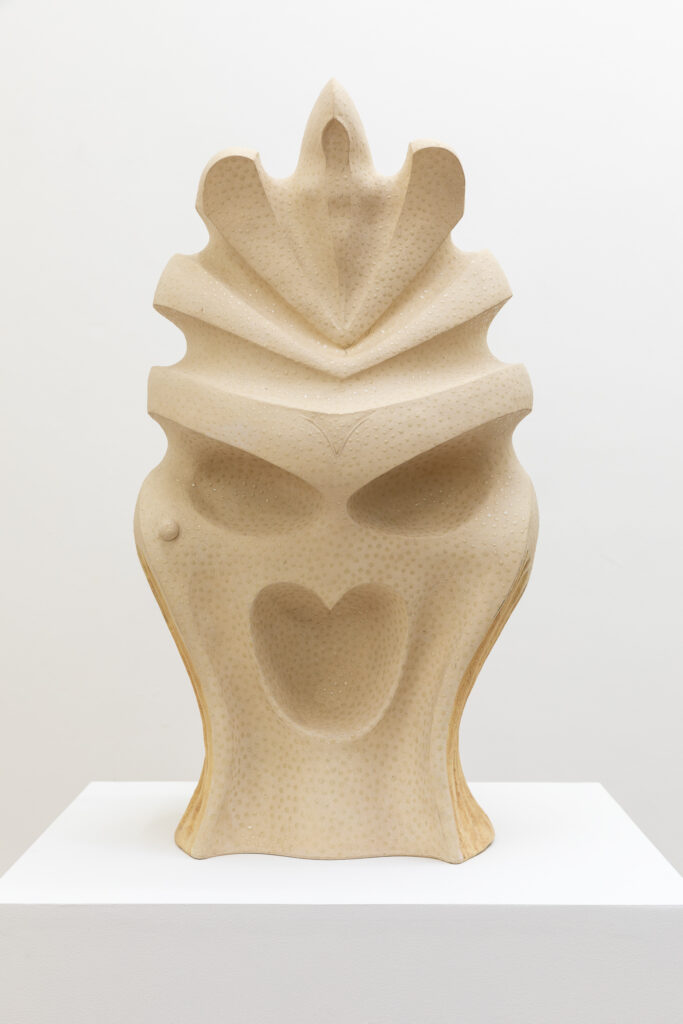
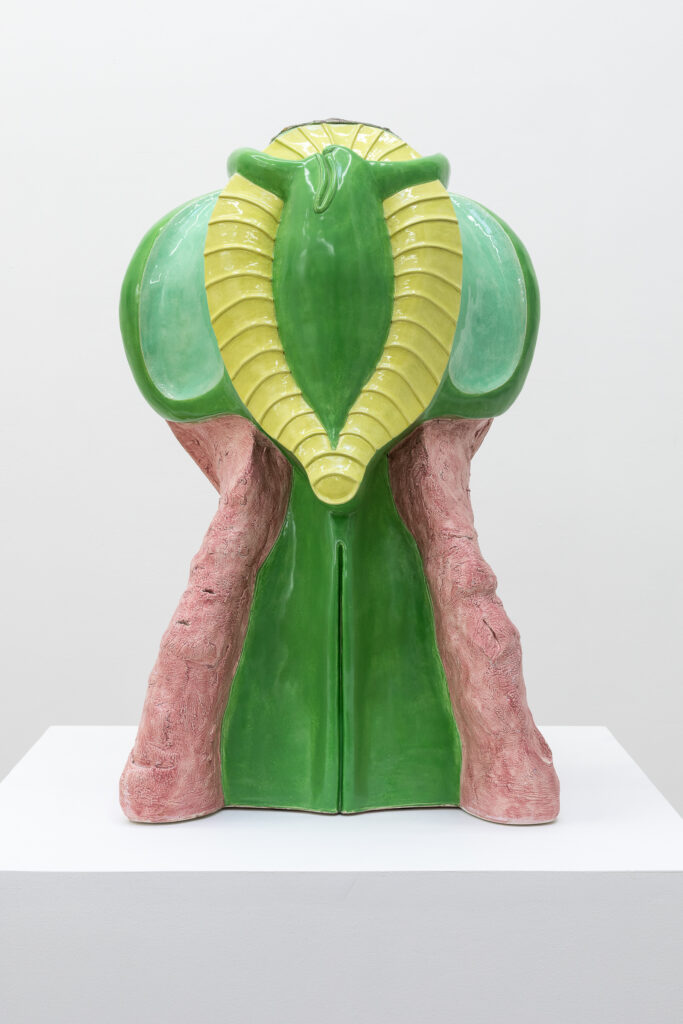
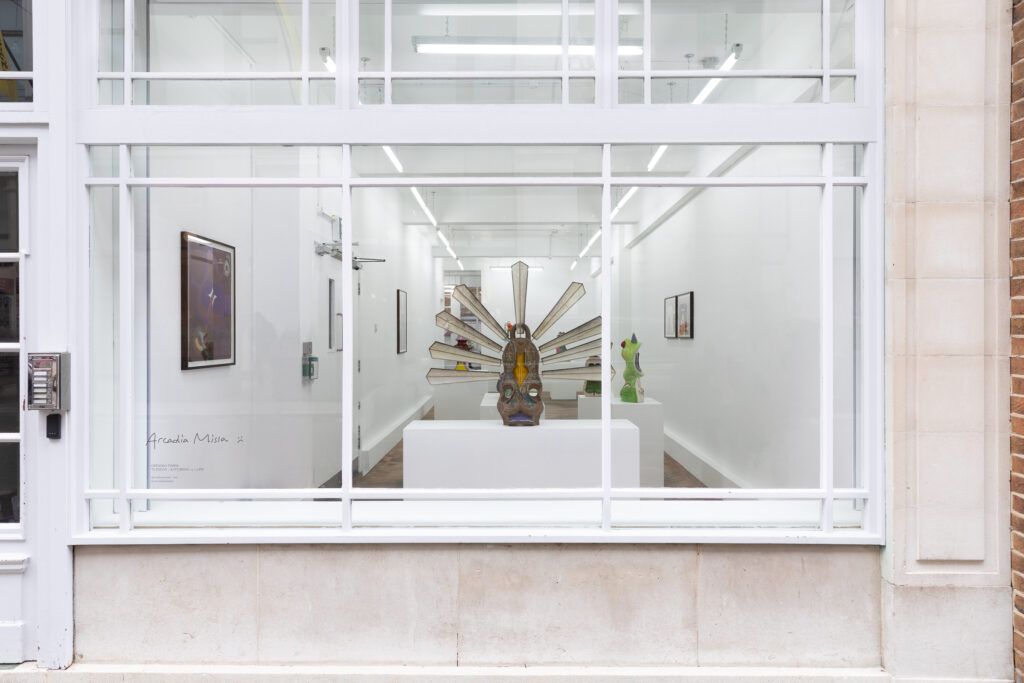
Redd Ekks: The Conference of the Birds
Redd Ekks (Robert Rasmussen) is a foundational figure in California’s ceramic arts revolution, and yet his work remains largely elusive. After earning his degree from the San Francisco Art Institute in 1959, he taught in the school’s ceramics program for the next three decades and forged a body of work informed by symbolism, morphology and West Coast Surrealism. His practice is solemn and secretive, giving form to sculptures that induce a numinous reverence.
While the San Francisco Art Institute had long taught pottery, Redd Ekks and his fellow instructors Ron Nagle and Richard Shaw transformed the program into a nerve-center for new and unconventional approaches to the medium. They turned vessels into meditations on texture and contour, introducing low- fire techniques and experimenting with overglazes and multiple firings. In so doing, they partook in a California-wide effort to cleave clay from craft and recast it as a sculptural medium.
Theirs was an unusual contribution to this effort. For example, Los Angeles artists Peter Voulkos and John Mason, among others, worked with fierce, oversized abstraction. In Davis, Robert Arneson, David Gilhooly and Clayton Bailey made lumpy and puerile “Funk” objects. These (almost entirely male) artists used extreme scale and toilet humor to separate themselves from clay’s perceived domesticity and femininity. Such anxieties are absent in the work of Redd Ekks and his cohort. They embraced white clay body—previously the reserve of primary school art projects—and surface painting usually found in what Nagle called “grandma wares.” Their hyper-detailed forms exploit this clay’s plasticity; precise brushstrokes and decals maximized the potential of working on the surface. The resulting delicacy resisted gendered projections.
Among those in his circle, Redd Ekks is distinctive for his symbology and religious evocations. Nordic runes (the artist was born in Norway) and Tibetan tantra inform a graphic language punctuated with emblems and pictographs. Their size also compels a devotional regard. Too large to be playthings, too small to be monuments, they fit neither on a shelf nor in a landscape. They are better placed in a niche or on an altar. In earlier exhibitions, he incorporated cast and blown glass, mechanical components and organic matter into large, temple-like installations where sculptures performed as sacred objects.
This mystical orientation, too, has a Californian inflection. Since the 1930s, the state has produced innumerable syncretic theologies. Spiritual practices from around the world swirled together— sometimes with insightful subtlety, other times with promiscuous abandon. One finds similarities between Redd Ekks’ sculptures and the paintings of Gordon Onslow Ford, his teacher in the Bay Area, who combined theosophy with the study of pre-Columbian artifacts and the ethos of Surrealism. They also reflect the counterculture of the 1960s, steeped in the orphic psychedelia so fundamental to this movement’s critique of Western rationalism.
Several works in X summon specific places of ritual. Molen II refers to the site of ancient stone burial mounds on the eastern coast of Norway. Priest alludes to Mass Rock in Ballingeary, Ireland, where Catholics held ceremonies in secret when such practices were forbidden. Light Box I was inspired by the Indigenous rock carvings the artist encountered in the American Southwest. While responsive to these locations and histories, each sculpture is loosened from its association; they do not resemble their points of reference. Rather, their making can be understood as a ritual inspired by other rituals. The rhythms of handiwork, surface-treatment and firing—undertaken in multiple rounds—are rites unto themselves. Making these sculptures becomes a ceremony that commemorates the ceremonies of others.
Like religious objects they inspire communion more than interpretation. One might say that each piece compels its own ritual in the viewer—a walk around the object that sets its uncanny dimensions into motion. Their textures and contours transmogrify. They unveil new resemblances and reveal different objects that induce a hypnotic circular amble.
Two works titled Attar I and Attar II refer to the medieval Persian poet Farid Ud-Din Attar, whose Conference of the Birds is an allegory on the spiritual quest of Sufism. In this epic poem, the hoopoe bird convinces others—the parrot, the peacock, the duck, the hawk—to journey across seven valleys and seek their divine sovereign, Simorgh. When they reach their destination, they find only a mirror and their own reflection, as if enlightenment were always with them but never self-evident. Simorgh is mystical truth itself, and its pursuit is the meaning of their undertaking: “The truth we seek is like a shoreless sea.” The sculptures in this exhibition are likewise shoreless, folded forever into themselves, infused with what Attar called the “musky scent” of elemental mystery.
Showing the work of Redd Ekks is not without its efforts. X is the artist’s first solo exhibition in more than twenty years. It required pilgrimage to his home in the West Cork countryside, the navigation of winding nameless streets, precarious climbs into garrets and the excavation of boxes. Like Attar— about whose life little is known and whose name was chosen rather than given—the artist revels in a certain obscurity and inscrutability. Unlike Attar—often inclined to wax lyrical on his own writing— Redd Ekks makes few statements about his work. Giving so little away is itself a tradition in California’s long and shadowy history of art. Sculptors, poets, and painters often carved out secluded worlds, preferring private pursuit over public proclamation. They practiced what the artist Jess, Redd Ekks’s contemporary, once called the “indwelling” of reflective repose. This contraction, like a big bang, blasts the artist into many realms: historical objects, cosmology, metaphysics, altered states, and the natural world.
However hushed, Redd Ekks’ sculptures are luminous like the birds in Attar’s poem. They are gleaming, pleated, crowned and crested. They share a fluctuating iridescence that bewitches like a courtship display. Perhaps this is their ultimate magic, both elusive and delectable, ascetic and sybaritic, their cryptic qualities coextensive with the rapture of beholding.
- Zully Adler
List of works:
- Untitled, 1995
Work on paper, framed
75 x 65 cm (29 1/2 x 25 5/8 inches) (framed) - Mr. Salmon, 2005
Ceramic, wire, salmon skin
100 x 118 x 22 cm (39 3/8 x 46 1/2 x 8 5/8 inches) - Attar II, 2003
Ceramic
57 x 33 x 20 cm (22 1/2 x 13 x 7 7/8 inches) - Untitled (Study for
installation at a shopping mall parking lot in South San Francisco) (1), 1988
46 x 58.5 cm (18 1/8 x 23 inches) (framed) - Untitled (Study for
installation at a shopping mall parking lot in South San Francisco) (2), 1988
Work on paper, framed 46 x 58.5 cm (18 1/8 x 23 inches) (framed) - Suite Georgia,
2013-2014
Ceramic
47 x 48 x 28 cm (18 1/2 x 18 7/8 x 11 inches) - Thanx Fionn, 2005
Ceramic
80 x 69 x 20 cm (31 1/2 x 27 1/8 x 7 7/8 inches) - Untitled, 2005
Ceramic
48 x 33 x 33 cm (18 7/8 x 13 x 13 inches) - Untitled, 1995
Work on paper, framed
84.5 x 64.5 cm (33 1/4 x 25 3/8 inches) (framed) - Molen II, 1989
Ceramic
32 x 23 cm( 24 x 12 5/8 x 9 inches) - Takes Two to Tango, 2006
Ceramic
75 x 62 x 29 cm (29 1/2 x 24 3/8 x 11 3/8 inches) - Priest, 1991
Ceramic
60 x 32 x 24 cm (23 5/8 x 12 5/8 x 9 1/2 inches) - Attar I, 2003
Ceramic
42 x 25 x 34 cm (16 1/2 x 9 7/8 x 13 3/8 inches) - 1i, 2007
Ceramic
64 x 30 x 47 cm (25 1/4 x 11 3/4 x 18 1/2 inches) - Light Box I, 1992-1993
Ceramic
47 x 24 x 12 cm (18 1/2 x 9 1/2 x 4 3/4 inches)